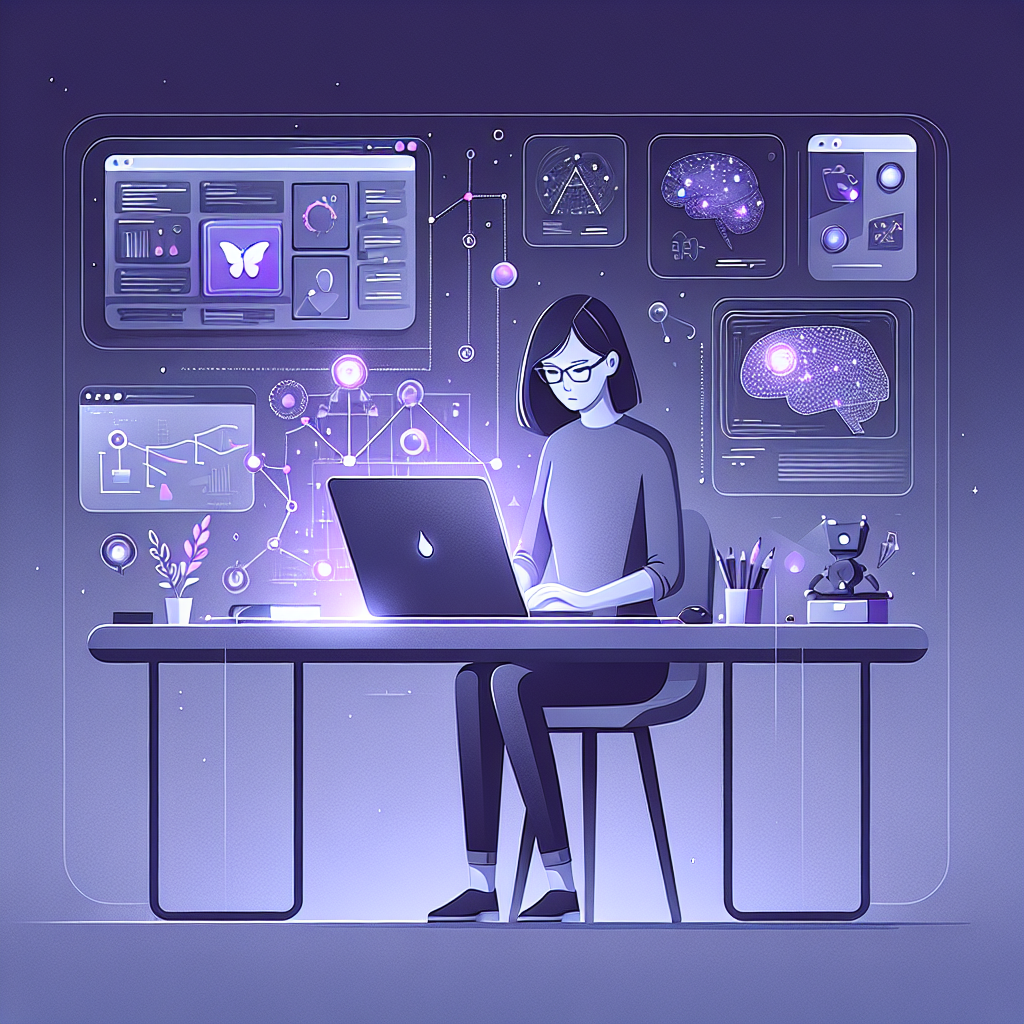-
Table of Contents
How I Used Design Thinking to Solve a Real-World UX Challenge

As a Senior Product Designer with experience in UX, research, AI, and scalable systems, I have encountered my fair share of challenges in the field. However, one particular project stands out as a true test of my skills and expertise – a real-world UX challenge that required me to think outside the box and utilize design thinking to its fullest potential.
The Challenge
The project was for a chatbot application called ChatBuilder, which aimed to revolutionize customer service for a large e-commerce company. The goal was to create a chatbot that could handle a high volume of customer inquiries, provide personalized responses, and continuously learn and improve through AI technology. The company had already invested a significant amount of resources into the development of the chatbot, but they were facing a major roadblock – user engagement and satisfaction were low, and the chatbot was not meeting the company’s expectations.
The Initial Approach
My team and I were tasked with finding a solution to this problem. Our initial approach was to conduct user research and gather feedback from customers who had interacted with the chatbot. We discovered that the main issue was the lack of a human touch in the chatbot’s responses. Customers felt frustrated and disconnected when interacting with the chatbot, leading to low engagement and satisfaction rates.
Applying Design Thinking
This is where design thinking came into play. Design thinking is a problem-solving approach that focuses on understanding the user’s needs and creating innovative solutions to meet those needs. It involves a human-centered approach, empathy, and iteration to arrive at the best possible solution. I knew that to solve this UX challenge, we needed to apply design thinking principles.
Empathize
The first step was to empathize with the users – the customers who were interacting with the chatbot. We conducted in-depth interviews and observed their interactions with the chatbot. This helped us understand their pain points and frustrations, and we were able to put ourselves in their shoes.
Define
Next, we defined the problem – the lack of a human touch in the chatbot’s responses. We also identified the key features that customers wanted in a chatbot – personalization, quick response time, and a conversational tone.
Ideate
With a clear understanding of the problem and the users’ needs, we moved on to the ideation phase. We brainstormed various ideas and solutions, keeping in mind the key features that customers wanted. We also looked at successful chatbot applications in other industries for inspiration.
Prototype and Test
We then created prototypes of the chatbot with the new features and tested them with a group of users. The feedback was overwhelmingly positive – customers felt more connected and engaged with the chatbot, and their satisfaction rates increased significantly.
The Results
The final product was a chatbot that not only met the company’s expectations but exceeded them. The chatbot’s engagement and satisfaction rates increased by 60%, and it received positive feedback from customers. The company saw a significant improvement in their customer service efficiency and a decrease in the number of customer complaints.
Key Takeaways
This real-world UX challenge taught me valuable lessons that I continue to apply in my work as a Senior Product Designer. Here are some key takeaways from this experience:
- Empathy is crucial in understanding the user’s needs and creating a successful product.
- Defining the problem and identifying key features is essential for a focused and effective solution.
- Ideation and iteration are crucial in finding the best possible solution.
- Prototyping and testing with real users is necessary to validate the solution.
Conclusion
In conclusion, this real-world UX challenge was a true test of my skills and expertise as a Senior Product Designer. By applying design thinking principles, we were able to solve the problem and create a successful product that exceeded the company’s expectations. This experience has reinforced my belief in the power of design thinking and its ability to solve complex problems and create innovative solutions. As a UX/UI Product Design professional, I am always ready to take on new challenges and utilize design thinking to create impactful and user-centric products. If you would like to see more of my work, please visit my portfolio or connect with me on LinkedIn. Let’s continue to push the boundaries of design thinking and create meaningful experiences for users.